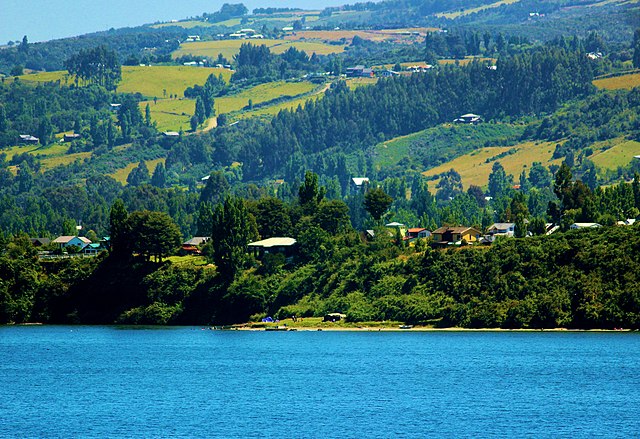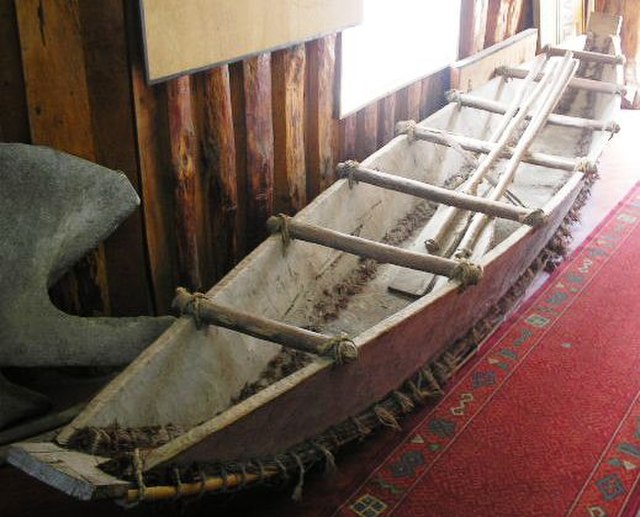The Churches of Chiloé in Chile's Chiloé Archipelago are a unique architectural phenomenon in the Americas and one of the most prominent styles of Chilotan architecture. Unlike classical Spanish colonial architecture, the churches of Chiloé are made entirely in native timber with extensive use of wood shingles. The churches were built from materials to resist the Chiloé Archipelago's humid and rainy oceanic climate.
Saint Mary Church (Iglesia Santa María) in Achao
Image: 08. Achao, Isla de Quinchao (34)
Image: Iglesia de San Francisco, Castro, exterior 02
Image: Iglesia de Santa María de Rilán, o Iglesia de Rilán. Isla Grande de Chiloé. Chile
The Chiloé Archipelago is a group of islands lying off the coast of Chile, in the Los Lagos Region. It is separated from mainland Chile by the Chacao Channel in the north, the Sea of Chiloé in the east and the Gulf of Corcovado in the southeast. All islands except the Desertores Islands form Chiloé Province. The main island is Chiloé Island. Of roughly rectangular shape, the southwestern half of this island is a wilderness of contiguous forests, wetlands and, in some places, mountains. The landscape of the northeastern sectors of Chiloé Island and the islands to the east is dominated by rolling hills, with a mosaic of pastures, forests and cultivated fields.
Countryside in the outskirts of the city of Castro
A southern pudú, one of smallest deer in the world, amongst Chilean rhubarb on Isla San Pedro.
Darwin's fox (Lycalopex fulvipes) is endemic to the southern portion of the Chilean Coast Range.
Reconstruction of a dalca, a type of boat used by Chonos, Huilliches and Spaniards living in Chiloé








